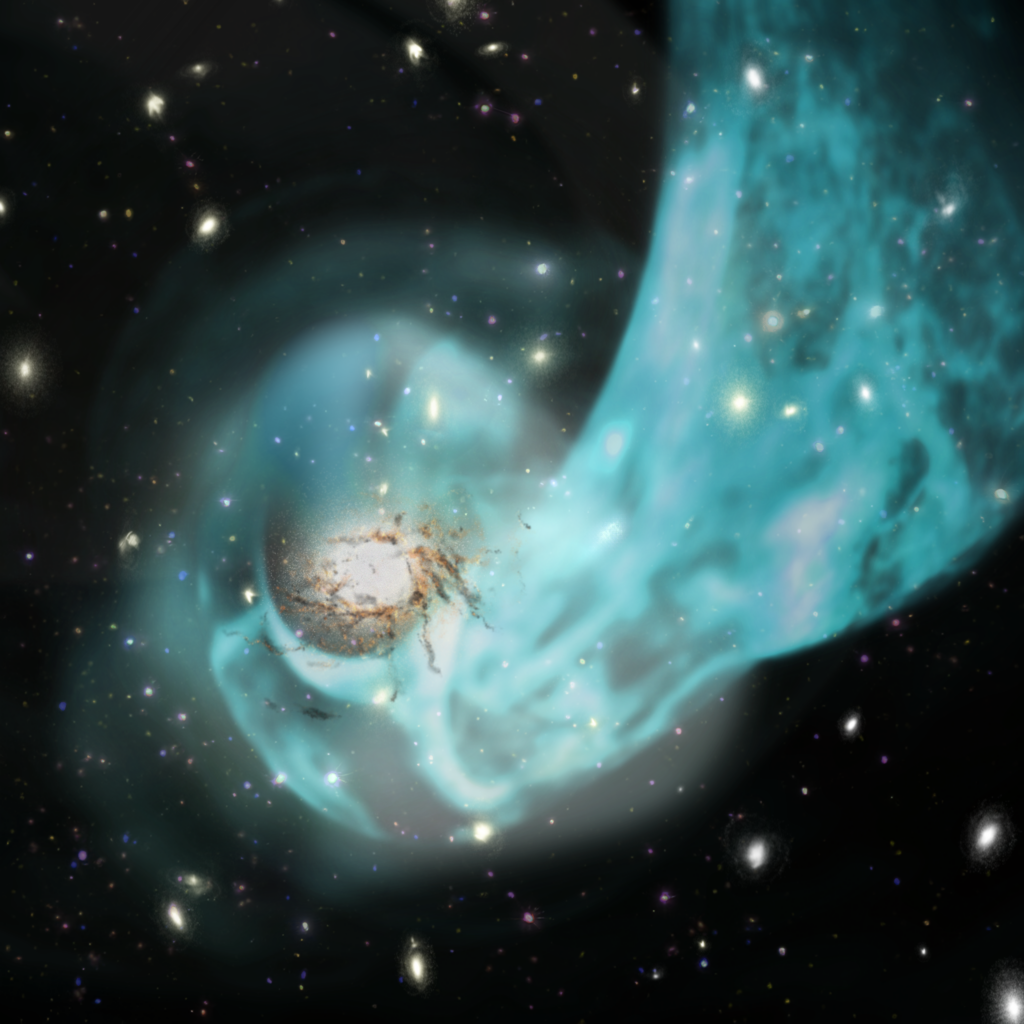Using the XRISM X-ray telescope, astronomers have observed hot gas sloshing back and forth in the core of a cluster of galaxies. This provides the first direct evidence of gas motions driven by a collision on cosmic scales. Publication in Nature.
Interstellar medium
Galaxies consist of hundreds of billions of stars, with interstellar medium between them. Under the influence of gravity, thousands of galaxies can aggregate, together with dark matter and hot gas, into so-called clusters of galaxies. The intracluster gas is heated to tens of millions of degrees Celsius, causing it to emit X-rays. Astronomers have long thought that clusters continue to grow through repeated collisions and mergers with other clusters. The XRISM X-ray telescope, for which SRON has built the filter wheel, has now for the first time measured how this dynamic process shapes the motions of the hot gas in the core of a galaxy cluster.
Unexpectedly hot gas
The central regions of clusters are among the brightest X-ray sources in the Universe. Theoretically, the energy loss from their radiation should cause the surrounding gas to cool down over time. However, observations consistently show that the gas remains unexpectedly hot, which was puzzling astronomers. One of the main hypotheses was that gas motions play a key role in maintaining these high temperatures, but previous space instruments were not accurate enough to measure these velocities.
Gas sloshes back and forth
An international team of researchers, including astronomers from SRON, has now measured the velocity structure of hot gas in the core of the Centaurus galaxy cluster with sufficient precision. This shows that the movement of the gas coincides with oscillations caused by a past collision with a smaller cluster. In other words, the gas sloshes back and forth, flowing through and around the galaxies. Eventually, astronomers expect that some of these flowing motions will become turbulent over time, stirring the hot gas and helping it to maintain its high temperature.



